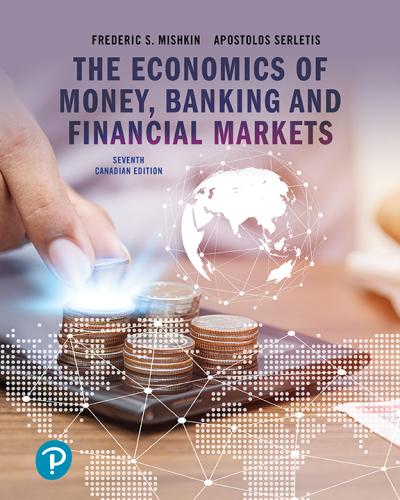27. As defined in Exercise 1, a rate cycle is a period of monetary policy during which...
Question:
27. As defined in Exercise 1, a “rate cycle” is a period of monetary policy during which the federal funds rate moves from its low point toward its high point, or vice versa, in response to businesscycle conditions. Go to the St. Louis Federal Reserve FRED database, and find data on the federal funds rate (FEDFUNDS), bank reserves (TOTRESNS), bank deposits (TCDSL), commercial and industrial loans (BUSLOANS), real estate loans (REALLN), real business fixed investment (PNFIC96), and real residential investment (PRFIC96). Use the frequency setting to convert the federal funds rate, bank reserves, bank deposits, commercial and industrial loans, and real estate loans data to “quarterly,” and download the data.
a. When did the last rate cycle begin and end? (Note: If a rate cycle is currently in progress, use the current period as the end.) Is this rate cycle a contractionary or an expansionary rate cycle?
b. Calculate the percentage change in bank deposits, bank lending, real business fixed investment, and real residential (housing) investment over this rate cycle.
c. Based on your answers to parts
(a) and (b), how effective was the bank lending channel of monetary policy over this rate cycle?
Step by Step Answer:

The Economics Of Money, Banking And Financial Markets, Seventh Canadian
ISBN: 9780226531922
7th Canadian Edition
Authors: Frederic S. Mishkin






